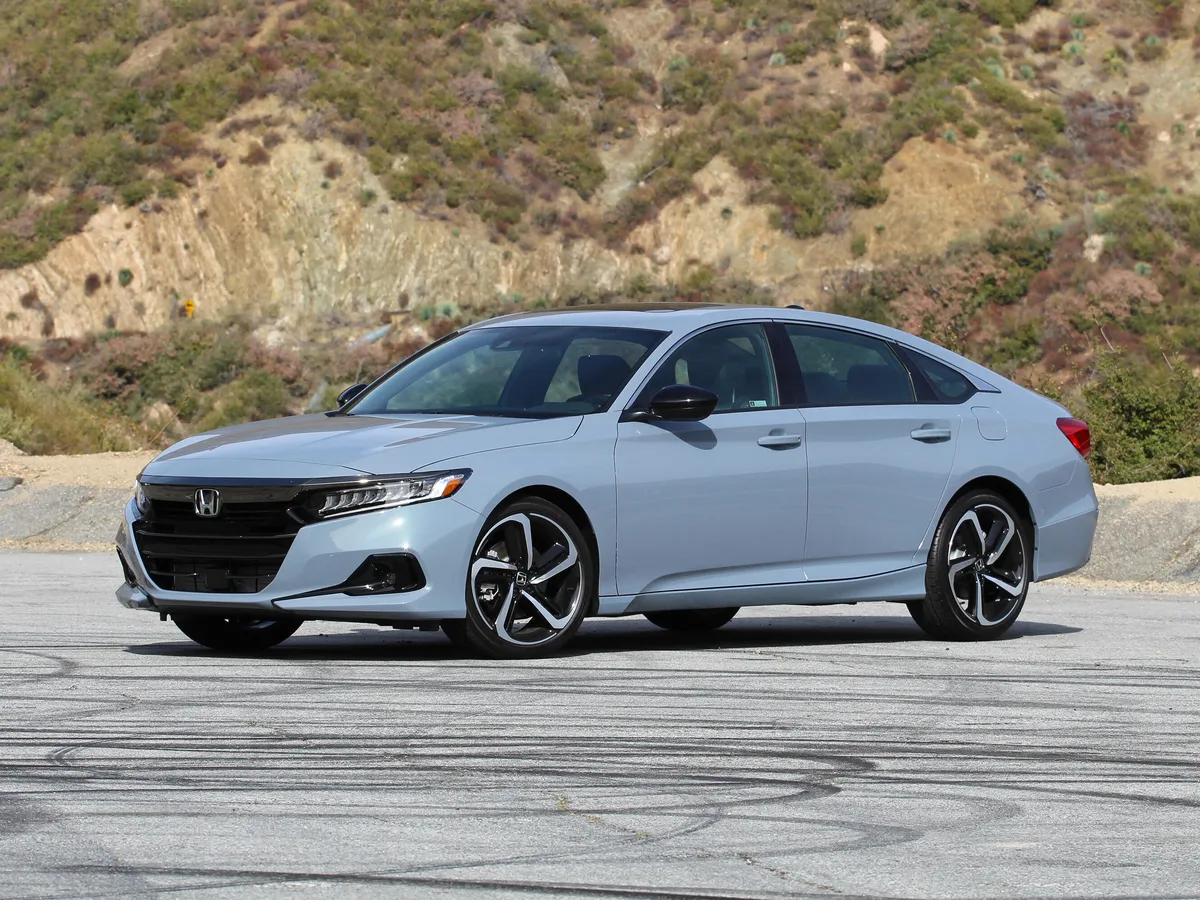Modern vehicles are marvels of engineering, integrating thousands of parts, dozens of computers, and a network of sensors that collectively ensure smooth, safe, and efficient operation. In this era of electronic sophistication, it’s the sensors that do the unseen heavy lifting.
From monitoring the mixture of air and fuel in the combustion chamber to calculating wheel speed, throttle position, and exhaust content, sensors form the backbone of a vehicle’s brain — the Electronic Control Unit (ECU).
When working flawlessly, they provide real-time data that allows your car to perform with surgical precision. But when they fail — and they often do — you’re looking at warning lights, diagnostic trouble codes (DTCs), erratic performance, and potentially costly repairs.
Not all cars, however, are created equal when it comes to sensor reliability. Some vehicles are known for chewing through sensors at an alarming rate, while others — often overlooked in this category — are praised for their long-term durability and minimal electronic issues. This divergence is largely due to each manufacturer’s engineering philosophy.
Certain automakers emphasize reliability, ease of maintenance, and durability, often by designing systems that don’t overly depend on sensitive electronic feedback loops. Others, in pursuit of peak performance, tighter emissions standards, or cutting-edge innovation, implement highly complex systems that require constant sensor input and often, frequent sensor replacements.
In many modern cars, sensors are not only more numerous, but they also operate under more stressful conditions than ever before. Turbocharged engines run hotter, direct-injected fuel systems rely on precise timing, and advanced safety systems like adaptive cruise control and lane keeping require constant data from a suite of cameras and radar sensors.
With increased demand and environmental stress, these systems wear out faster, and even a single failed sensor can compromise multiple vehicle functions. That’s why knowing which cars are kinder to their sensors — and to your wallet — is more valuable than ever.
This article explores the extremes: five cars that rarely need sensor replacements and five cars that are notorious for consuming them. On one side, we’ll examine models known for their long-lasting electronic components, such as the Toyota Camry and Honda Accord, vehicles that reflect a design strategy focused on simplicity, ease of access, and high-quality components.
These cars don’t just last a long time mechanically — their electronics, including sensors, are designed to endure as well. Many owners of these vehicles report going over 150,000 or even 200,000 miles without needing to replace a single sensor, barring extreme conditions or accidental damage.
On the other side, we’ll delve into cars that, while often celebrated for performance, luxury, or advanced technology, are known in automotive circles for frequent sensor-related issues.
Think of models that are packed with cutting-edge systems but are equally prone to sensor failure, causing regular check engine lights, limp mode activation, or sensor-triggered safety system malfunctions. These cars, though impressive on paper, often demand high levels of diagnostic attention and sensor replacements, especially as they age.
The difference between these two categories isn’t just a matter of cost — it’s a matter of daily reliability and peace of mind. Knowing your vehicle won’t unexpectedly throw a code during your morning commute is an underrated luxury. And in a world where every electronic malfunction can turn into a multi-hundred-dollar repair bill, sensor stability can greatly impact long-term ownership satisfaction.
So, whether you’re looking to purchase a new car, maintain your current ride, or simply learn more about the hidden components that affect reliability, this article will offer insights into how and why certain vehicles either preserve or punish their sensors.
The goal is to help you understand what goes wrong—or what’s done right—beneath the surface, so you can make informed choices and keep your vehicle on the road without becoming overly familiar with your mechanic.
ALSO READ: 6 Crossovers Where Rear Cargo Lid Hits Tall Drivers
5 Cars That Rarely Need Sensor Replacements
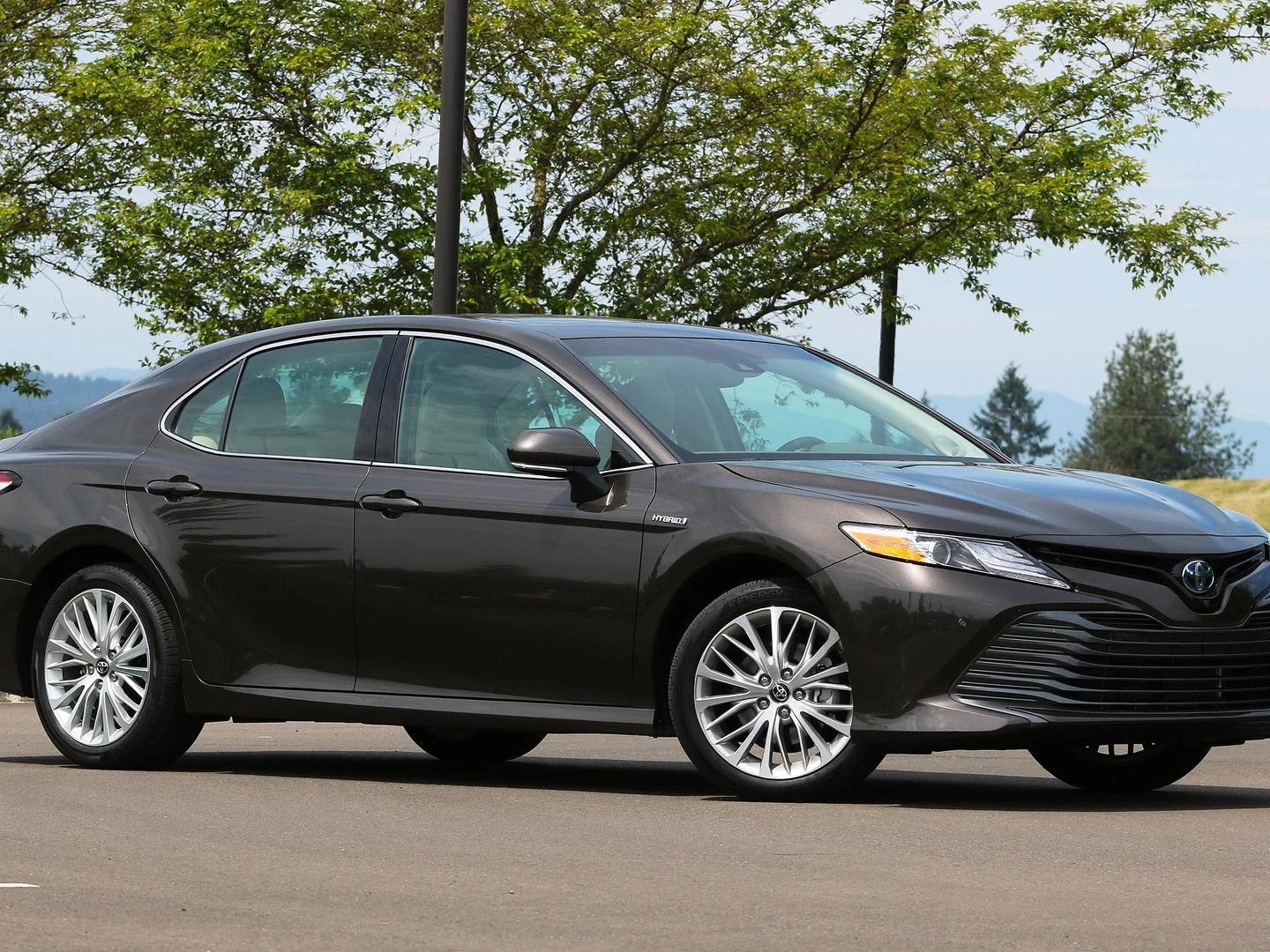
1. Toyota Camry
The Toyota Camry has long been the poster child of automotive reliability, and its sensor durability is no exception. This sedan is engineered with a conservative approach to electronic complexity, ensuring that essential components like oxygen sensors, mass airflow (MAF) sensors, and knock sensors operate efficiently for years without requiring replacement.
Unlike many modern cars overloaded with high-sensitivity sensors that frequently fail or produce false readings, the Camry’s sensor system is known for being stable, consistent, and predictable — a result of decades of design refinement and real-world testing.
Part of this resilience comes from Toyota’s component sourcing and quality control. Toyota doesn’t cut corners with its electronic parts, and its suppliers follow rigorous specifications. The placement of sensors also reflects practical thinking: heat-prone components are located in cooler engine zones or are well-shielded.
Even the harnesses and connectors are engineered to resist corrosion and wear, which plays a significant role in preventing sensor-related issues. This attention to detail ensures that the average Camry will go well past 150,000 miles without requiring major sensor intervention.
Another contributing factor is Toyota’s engine architecture. Whether you’re driving a four-cylinder or a V6, the engines in the Camry are low-strain and relatively understressed. This means less thermal cycling and fewer extreme pressure environments for sensors to endure.
Since many sensor failures result from long-term heat exposure and vibrations, the Camry’s cool-headed engine management directly supports sensor longevity. Additionally, the Camry’s ECU programming doesn’t overreact to slight variations in sensor output, avoiding the sort of nuisance fault codes that might prompt unnecessary replacements in other vehicles.
Ultimately, the Camry’s reputation for reliability isn’t just about avoiding major engine failures. It’s about how well it minimizes the little things, like annoying, recurring sensor replacements, that plague so many other cars. This makes it an excellent choice for anyone seeking a low-maintenance driving experience, especially those who don’t want to constantly be chasing “Check Engine” lights caused by finicky electronics.

2. Honda Accord
Honda’s Accord is another standout when it comes to avoiding sensor-related headaches. Known for striking a perfect balance between performance and reliability, the Accord integrates its electronics carefully rather than lavishly.
It features all the necessary sensors for modern emissions compliance and efficiency, like camshaft position sensors, throttle position sensors, and oxygen sensors, but they’re robust, long-lasting, and rarely trigger failures during the normal lifespan of the car.
One of the main reasons sensors in the Accord last so long is that Honda places a strong emphasis on long-term reliability during its development cycles. Unlike some manufacturers who aggressively pursue new technology and push boundaries with untested systems, Honda takes a more cautious approach.
Each new sensor or electronic innovation goes through years of testing before it sees mass production. As a result, when you drive an Accord, you’re driving a car that prioritizes durability over flash.
The sensor systems are also intelligently designed. For instance, if a sensor fails, the car’s ECU is often able to operate in a fail-safe or limp mode without drastic performance loss, preventing collateral damage and allowing drivers to safely reach a repair shop without panicking.
Moreover, Honda’s electrical layout uses clean routing, shielding, and minimal interference points. This keeps sensor signals clean and stable over time, reducing degradation and failure caused by electromagnetic noise or ground loop issues.
Honda’s longstanding commitment to serviceability also shines through. Many sensor replacements, should they become necessary, are relatively straightforward and accessible, minimizing labor costs and complexity.
This is yet another reason why the Accord’s sensors last longer in real-world use: they’re rarely overworked, they’re well protected, and they’re rarely installed in ways that expose them to unnecessary abuse. Over the long haul, this means lower repair bills, less downtime, and a more pleasant ownership experience.
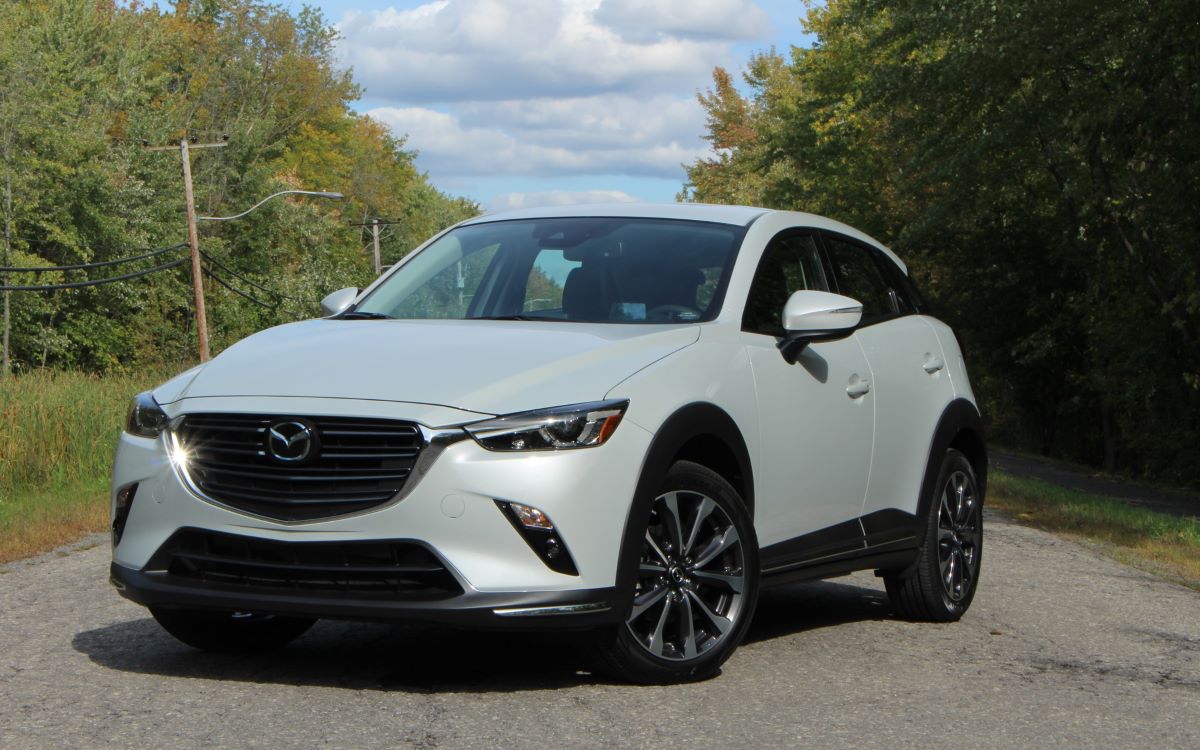
3. Mazda 3 (Naturally Aspirated Models)
The Mazda 3, particularly in its naturally aspirated form, has quietly become a standout in the compact segment for long-term reliability, and its sensor systems deserve special recognition. Mazda’s SkyActiv engine platform is built around principles of mechanical and thermal efficiency, and this directly benefits sensor life.
Where some manufacturers overwhelm their cars with electronically dependent systems, Mazda keeps things balanced — enough tech for performance and emissions, but not so much that it becomes a burden over time.
One of the most noticeable benefits is how well the MAF sensor and throttle position sensors hold up under years of driving. Mazda positions these components intelligently within the engine bay to minimize exposure to hot air, vibration, or oil contamination — all common causes of premature sensor failure.
Additionally, Mazda’s fuel and air delivery systems are calibrated with clean, predictable flow rates. This means sensors aren’t constantly compensating for uneven fuel trims or poor combustion, which reduces long-term stress on these electronic components.
The engine control software in the Mazda 3 is another hidden strength. It doesn’t bombard sensors with ultra-high refresh rates or excessive recalibrations, and it’s not overly sensitive to minute variations that might otherwise trigger diagnostic trouble codes in other vehicles.
As a result, even if a sensor begins to show signs of age, the system allows for graceful degradation rather than an abrupt failure. This is particularly important for everyday drivers who don’t have access to scan tools or who may not respond immediately to a warning light.
Mazda also distinguishes itself by avoiding gimmicky tech that often proves unreliable over time. While the Mazda 3 offers modern features, it steers clear of unnecessary electronic bloat. The ABS sensors, wheel speed sensors, and parking sensors, were present, tend to be more reliable than what you’d find in similarly priced competitors.
This minimalist yet effective approach translates to fewer maintenance hassles and greater peace of mind over time. The naturally aspirated Mazda 3, in particular, represents a perfect harmony between modern technology and old-school resilience.
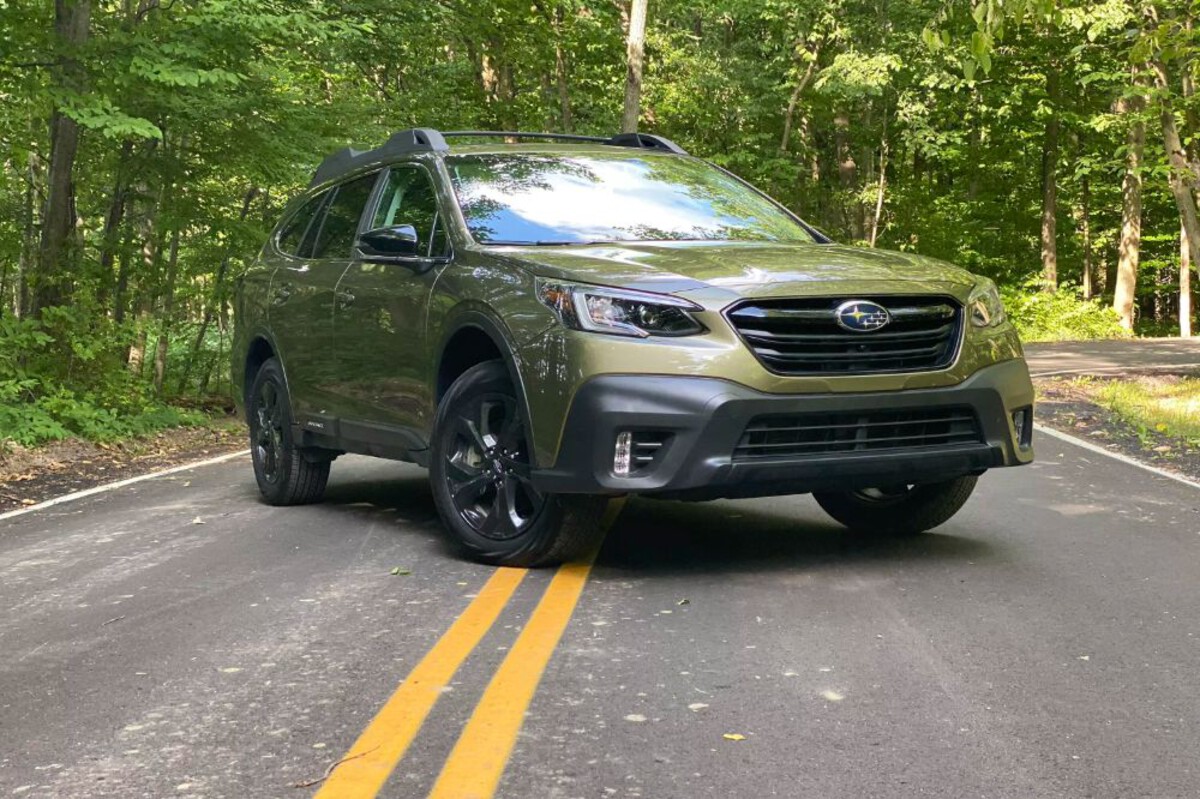
4. Subaru Outback (Pre-2015, Naturally Aspirated)
Before Subaru leaned more heavily into direct injection and turbocharging, its Outback lineup was a beacon of rugged simplicity. Models produced before 2015, especially the naturally aspirated variants, are beloved for their minimal electronic failures, including long-lived sensor systems.
This isn’t by accident — Subaru intentionally engineered these vehicles to withstand harsh climates and off-road conditions, and that philosophy extended to its sensor layout and protection strategies.
The boxer engine architecture plays a subtle yet critical role in this sensor’s reliability. Because of its horizontally opposed design, the engine maintains a low center of gravity and balanced weight distribution.
More importantly for sensors, this layout results in even thermal distribution across the engine bay, which reduces hot spots that could otherwise degrade electronic components like crankshaft and camshaft sensors. Subaru also incorporates generous shielding and durable connectors in their designs, further protecting sensors from the elements.
In these models, common sensors like the downstream oxygen sensors and MAF sensors are not only durable but also easy to access for diagnostics and replacement. That said, most owners never need to replace them. It’s common to find Outbacks from the early 2000s still using their original sensor sets, with no loss in performance or emissions compliance.
Subaru’s engine management system is tuned for dependability rather than peak output, which reduces wear and sensor stress over time.
Even the Outback’s more complex systems, like ABS and AWD traction control, are engineered conservatively. Subaru doesn’t push these sensors to operate at the bleeding edge of performance — instead, they’re calibrated to function consistently under a wide range of real-world driving conditions.
This conservative engineering focus makes these vehicles not only long-lasting but also forgiving in terms of maintenance, allowing owners to go for extended periods without encountering a single sensor fault.
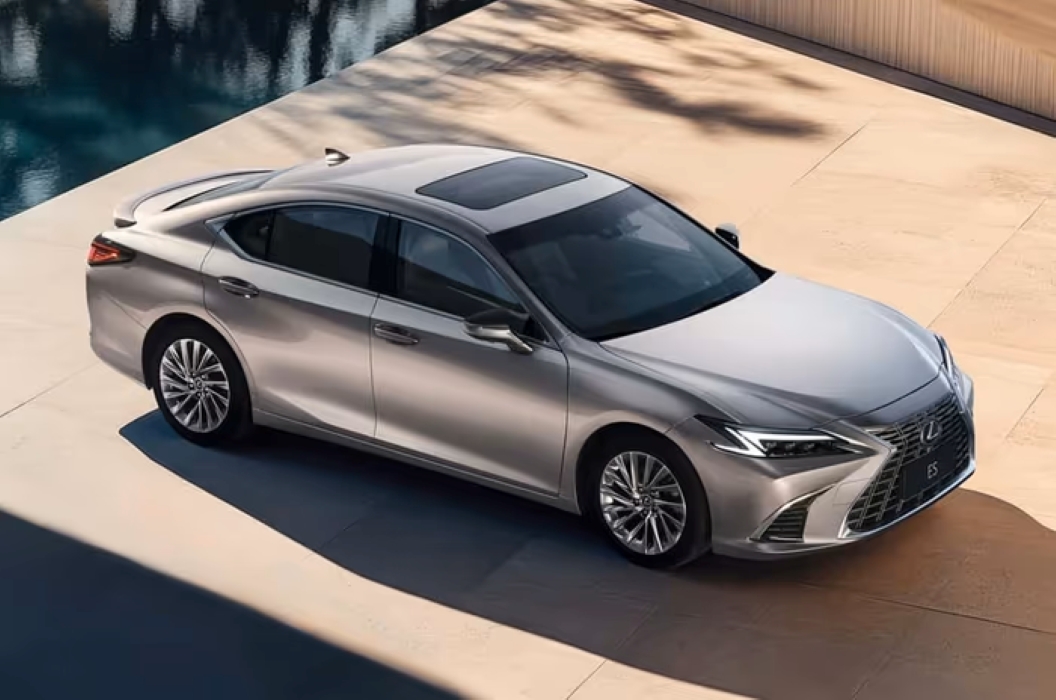
5. Lexus ES Series
The Lexus ES is proof that you don’t need to sacrifice long-term reliability for luxury. Built on the same platform as the Toyota Camry, the ES enjoys all the benefits of Toyota’s bulletproof engineering, including its approach to sensor integration.
However, Lexus adds an extra layer of refinement and quality control, resulting in a vehicle that offers luxury appointments with even fewer electronic issues than most mainstream sedans.
One major strength of the Lexus ES is its use of premium-grade components. From the materials used in the oxygen sensors to the wiring harness insulation, everything is built to outlast the competition. Lexus also implements advanced quality assurance testing at every stage of production.
Each sensor, whether for engine management, parking assistance, or climate control, is tested to perform under a wide range of conditions — far beyond typical real-world stress levels. This rigorous process ensures that what goes into the vehicle is already vetted for exceptional longevity.
Another reason for the ES’s sensor reliability lies in its electronics strategy. Lexus avoids the trap of over-engineering. While the car features sophisticated systems, they are layered into the architecture gradually and are thoroughly proven before being mass-deployed.
This results in an ECU that doesn’t panic over small signal fluctuations and sensors that aren’t working overtime trying to micromanage every input. The software logic prioritizes graceful degradation and adaptability, so one failing sensor doesn’t cause a domino effect across unrelated systems.
The outcome is a luxury sedan that seldom sees sensor replacements, even after years of use. Owners often report reaching 200,000 miles with original camshaft sensors, throttle sensors, and ABS modules intact. With regular oil changes and basic care, the Lexus ES can deliver a luxury experience that’s not only smooth and quiet but also free from the typical sensor-related frustrations that plague many of its European counterparts.
5 Cars That Rarely Need Sensor Replacements

1. Toyota Camry
The Toyota Camry is, in many ways, the embodiment of practical, worry-free motoring — a vehicle engineered not just for smooth daily commuting, but also for mechanical simplicity and longevity. One of the core aspects of this longevity is the Camry’s extraordinary reliability when it comes to its electronic components, particularly its sensors.
In a world where modern cars are increasingly dependent on finicky electronics, the Camry quietly endures, delivering tens of thousands of miles without so much as a warning light, and certainly without the need for frequent sensor replacements.
This reputation for resilience begins with Toyota’s deliberate engineering philosophy. The Camry is designed with tried-and-tested powertrains that emphasize thermal stability, even performance curves, and unaggressive tuning.
This not only contributes to low overall wear and tear but also dramatically reduces the stress placed on the car’s sensor systems. Take, for example, the Camry’s oxygen sensors and mass airflow (MAF) sensors.
These are two of the most common sensor failure points in many vehicles. However, in the Camry, they are positioned in such a way that they are shielded from extreme heat exposure, high oil saturation, or turbulent airflow, all of which can cause premature failure in other cars.
In addition to strategic placement, Toyota employs exceptionally high-quality sensor components sourced from trusted manufacturers. These sensors are engineered to meet rigid durability standards and are extensively tested in real-world conditions, including harsh climates, varied altitudes, and long idle cycles.
As a result, it’s not uncommon to find Camrys with over 200,000 miles still running on their original crankshaft sensors, throttle position sensors, and catalytic converter monitors. Add to that Toyota’s robust wire harnesses, corrosion-resistant connectors, and strong ECU design, and it’s easy to see why this sedan is a dream for anyone who dreads seeing a check engine light.
Toyota also maintains a sensible approach to electronic diagnostics. Unlike some German and European vehicles that are programmed to alert drivers over the smallest deviation in sensor readings, the Camry’s ECU is designed with a healthy threshold of tolerance.
This means it doesn’t overreact to minor, non-critical changes, sparing drivers unnecessary panic and avoiding needless replacements. The Camry simply doesn’t trigger sensor-related alerts unless there is an actual issue that genuinely needs attention. In other words, the system is calibrated not just to detect faults but to understand the difference between real malfunctions and natural variances over time.
All these factors combine to form a vehicle that is not only easy to drive but also refreshingly low-maintenance. For anyone seeking a car that doesn’t fall victim to the curse of premature electronic failure, particularly sensor-related breakdowns, the Toyota Camry remains one of the most trustworthy options on the road.
It doesn’t beg for constant diagnostic attention, and it doesn’t nickel-and-dime you with hidden electronic vulnerabilities. It just works, and keeps working, mile after mile.

2. Honda Accord
The Honda Accord shares a sibling-like kinship with the Toyota Camry when it comes to long-term reliability, but it does so with a slightly more refined personality and a touch more performance. Nevertheless, the Accord has consistently proven to be one of the most electronically stable midsize sedans on the road, particularly when it comes to the integrity and longevity of its sensors.
Whether it’s oxygen sensors, MAF sensors, or throttle position sensors, the Accord’s track record speaks for itself — these components rarely fail early, and when they do, it’s usually well past the 150,000-mile mark.
This is no accident. Honda, like Toyota, subscribes to a conservative engineering methodology that values long-term usability over short-term flair. Every component, including sensors, is tested in various extreme conditions before mass deployment.
This rigorous validation process ensures that sensors in the Accord are not only accurate and responsive but also physically durable and resilient to the kind of heat, moisture, and vibration that would wear down similar parts in other vehicles.
Honda’s design philosophy often involves minimizing unnecessary sensor deployment. Rather than overburdening the car with a hundred tiny electronic monitors, the Accord focuses on essential systems and ensures they work well.
What truly sets the Accord apart, though, is how its systems are calibrated. The Accord’s ECU is designed with smart logic that avoids hyper-reactivity. It does not treat every minor variance in sensor data as a system-threatening anomaly. This helps the car avoid “ghost” trouble codes and reduces the number of times sensors are flagged as problematic when they’re functioning within normal aging parameters.
This makes ownership less stressful, especially for those without access to advanced diagnostic tools, and it prevents unnecessary part replacements that can drive up maintenance costs in other brands.
Furthermore, sensor accessibility is a hallmark of Honda design. If and when a sensor replacement is needed, it’s rarely a labor-intensive affair. Honda places these components in accessible, service-friendly locations, allowing for quick diagnostics and straightforward swaps without tearing the engine bay apart. This practical design makes long-term ownership more economical and less prone to the dreaded repair fatigue that can come from more sensor-dependent European cars.
The combination of high-quality parts, thoughtful placement, non-intrusive ECU behavior, and low repair complexity makes the Honda Accord a beacon of sensor reliability. It’s a car that resists the pitfalls of overengineered electronics and instead provides a calm, confident, and highly durable driving experience for the long haul.

3. Mazda 3 (Naturally Aspirated Models)
In the compact car world, the Mazda 3 has always stood out for its spirited driving dynamics and athletic styling. But underneath its sporty veneer lies a quietly impressive feat: excellent electronic resilience, particularly in the naturally aspirated models.
These cars strike a rare balance between modern performance and old-school mechanical robustness — and it’s precisely this blend that makes their sensors last so long. Whether you’re looking at the mass airflow sensor, throttle position sensor, or exhaust gas recirculation (EGR) sensors, failure rates in the Mazda 3 are significantly lower than in many of its direct competitors.
Mazda’s SkyActiv engine platform is one of the keys to this reliability. The engine design focuses heavily on internal efficiency and minimal stress on peripheral systems. Instead of forcing sensors to continuously correct for engine irregularities — as you might see in less precisely tuned powertrains — the naturally aspirated Mazda engines run predictably and cleanly, giving sensors a more stable environment in which to operate.
This means fewer cycles of overheating, soot contamination, or voltage spikes — all common causes of premature sensor death in other cars.
The electrical architecture is another point in Mazda’s favor. Unlike vehicles that overcomplicate with dozens of unnecessary modules or delicate CAN bus interdependencies, the Mazda 3 keeps its wiring and ECU systems straightforward and logical.
The fewer the potential points of failure, the less likely it is that sensors will be stressed, misread, or exposed to surges. Moreover, Mazda tends to avoid integrating sensors into high-cost modules, which means if something does go wrong, it’s rarely a cascading problem.
Mazda’s restraint in tech deployment also plays a major role. Naturally aspirated models don’t have the added complexity of turbo boost sensors, intercooler temperature monitors, or high-pressure fuel rail sensors that plague more performance-oriented versions.
The result? Fewer parts that can go wrong, and fewer high-strain conditions for existing components to endure. And yet, despite this simplicity, the Mazda 3 still delivers strong fuel economy, precise throttle control, and excellent driveability — proof that more sensors don’t always equate to better engineering.
For drivers who want a tech-savvy, fun-to-drive car without being held hostage by the cost and frequency of sensor repairs, the Mazda 3 offers an exceptional balance. It respects both the mechanical and electronic sides of the ownership equation, and that harmony makes it one of the most sensor-stable cars in the modern compact segment.

4. Hyundai Elantra (2015–2020)
The Hyundai Elantra, especially the sixth-generation models from 2015 to 2020, represents one of the best value propositions in the compact sedan market, not only in terms of affordability but also for its surprising reliability, including the longevity of its sensor systems. Hyundai, once considered a budget brand, has made massive strides in quality control and engineering refinement, and nowhere is this more evident than in how the Elantra’s electronics hold up over time.
The key to the Elantra’s sensor reliability lies in its conservative engine tuning and robust electrical layout. The naturally aspirated 2.0-liter engine found in most trims is free from the added complexity of forced induction or direct injection, meaning there’s less heat, fewer pressure extremes, and generally a gentler operating environment for sensors.
Components such as the MAF sensor, camshaft position sensor, and O2 sensors are rarely reported as failure points, even as these vehicles approach six-figure mileage.
Moreover, Hyundai has adopted a “keep it simple” approach in many of its mass-market models. Sensor placement in the Elantra is practical and accessible, which not only makes them last longer but also makes them cheaper and easier to replace when needed.
Drivers often report years of use without any sensor-related issues, and Hyundai’s diagnostic systems aren’t overly sensitive, meaning you won’t be plagued by false check engine lights or nuisance codes.
For buyers who want an inexpensive, low-maintenance car that doesn’t demand frequent trips to the mechanic for obscure electronic failures, the Elantra fits the bill perfectly. Its track record for sensor durability makes it one of the more underrated, reliable cars on the road.
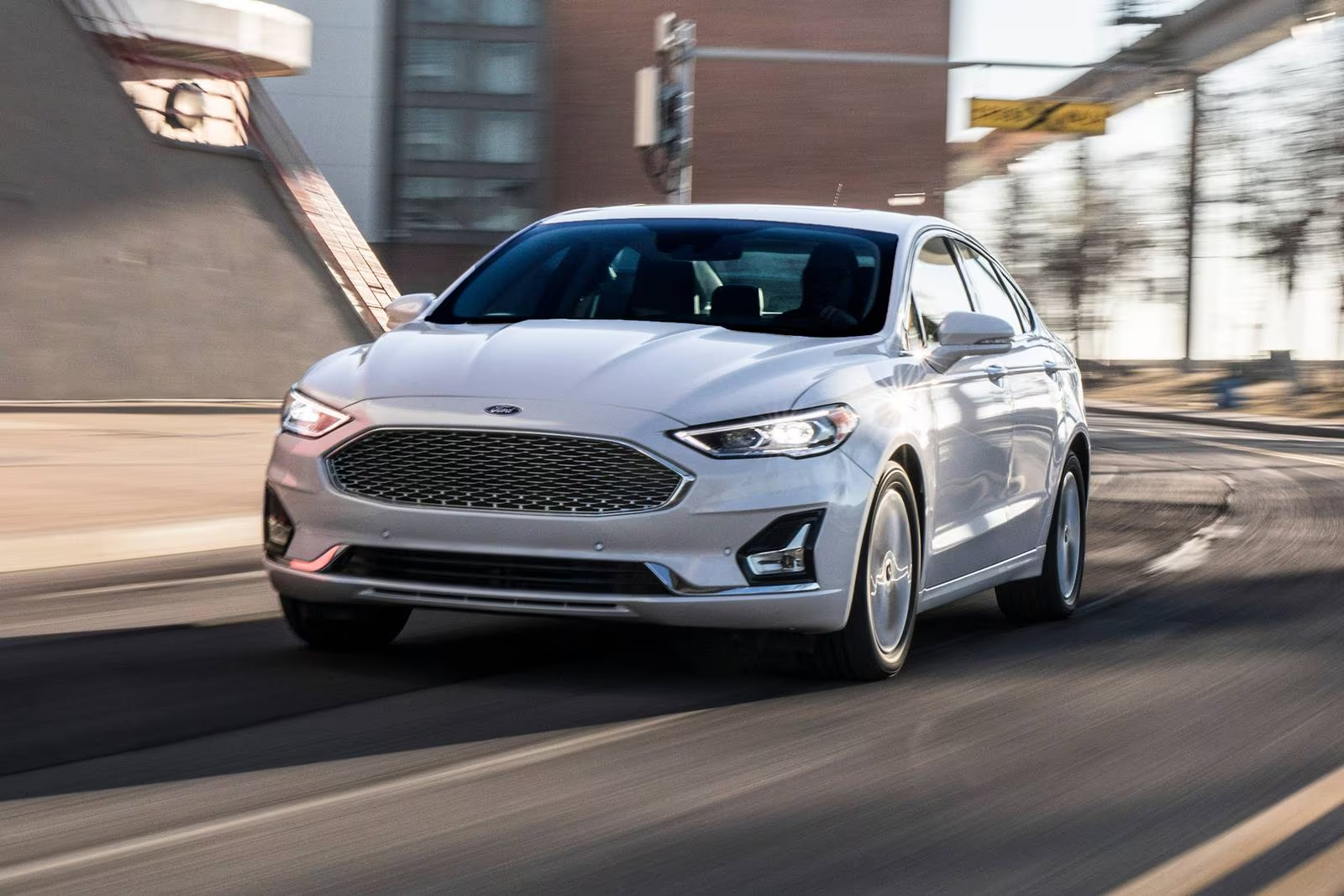
5. Ford Fusion (2.5L Non-Turbo Models, 2013–2020)
The Ford Fusion — particularly those powered by the base 2.5-liter naturally aspirated engine — has quietly built a reputation as one of Ford’s most dependable and low-maintenance models of the last decade. While turbocharged EcoBoost variants have had their share of electronic and mechanical issues, the non-turbo Fusion remains a smart pick for anyone seeking solid performance and minimal electronic drama, including exceptional sensor reliability.
One of the strengths of the 2.5L Fusion is its simplicity. The engine, originally derived from Mazda architecture, is straightforward, smooth-running, and easy to work on. It lacks the complex forced induction, high-pressure fuel systems, or finicky emissions controls that often lead to premature sensor failures.
Owners often praise the long life of the car’s MAF sensor, knock sensor, and even ABS-related components, which remain functional far beyond 100,000 miles in most cases.
Ford also deserves credit for designing this model with serviceability in mind. Sensor connectors are often easy to access, and engine bays aren’t cluttered with redundant plastic covers or unnecessary modules. The software tuning in these models is conservative, meaning they aren’t as prone to throwing false codes as some newer, more advanced systems found in performance trims or hybrid versions of the Fusion.
While the Ford brand has been hit-or-miss when it comes to long-term reliability across its lineup, the Fusion 2.5L is widely regarded as a “safe bet,” and that includes how well its sensors hold up over time. If you’re after a midsize sedan that delivers decent ride quality without nickel-and-diming you with electrical gremlins, this model should be near the top of your list.
ALSO READ: 5 Cars with Bulletproof Electronic Systems and 5 That Short Out Easily
As we’ve explored throughout this article, sensors are the lifeblood of modern automotive systems — quietly but constantly gathering data, relaying critical information, and keeping every aspect of your car functioning in harmony. Yet, as essential as these components are, they also represent one of the most overlooked (and frustrating) sources of modern vehicle problems.
Whether it’s an oxygen sensor that throws off your fuel economy or a faulty wheel speed sensor that disables your ABS, even one malfunctioning sensor can quickly spiral into an expensive inconvenience.
What becomes clear from examining sensor-friendly cars versus sensor-hungry ones is that reliability isn’t just about how long an engine lasts — it’s about how well all the supporting systems hold up as the miles stack up. A vehicle may have a bulletproof engine, but if it’s constantly plagued by failing sensors, warning lights, and electronic misbehavior, the ownership experience can be severely diminished.
Conversely, a car that may not boast flashy horsepower numbers or cutting-edge tech but stays electronically solid for 10 or 15 years can feel like a rare gem in today’s high-maintenance automotive world.
The five cars that rarely need sensor replacements — including the Toyota Camry, Honda Accord, Mazda 3 (naturally aspirated), Subaru Outback (pre-2015), and Lexus ES — all share some common characteristics.
First, they tend to avoid overcomplicating their systems. They focus on doing a few things exceptionally well rather than doing everything with digital overkill. Their ECUs are not hypersensitive to small fluctuations, which means fewer false positives and fewer unnecessary repairs.
Second, they use proven sensor designs and prioritize proper placement and shielding to minimize exposure to vibration, heat, and moisture. Third, these vehicles are built with long-term serviceability in mind, making them not only more reliable but also less costly to fix if something does go wrong.
On the flip side, the cars that “eat sensors” are often products of ambitious engineering that push boundaries, for better and worse. Whether it’s turbocharged performance cars, European luxury sedans, or tech-laden crossovers, these vehicles are often designed with such fine margins that any deviation, no matter how minor, triggers a fault.
It’s not always a matter of poor quality — in many cases, it’s simply a byproduct of how tightly integrated and interdependent these systems are. The same complexity that allows for advanced performance or seamless driver assistance also becomes a liability when a single failed sensor throws off an entire system.
This dichotomy serves as a reminder that technology, while beneficial, comes with trade-offs. The more sensors a vehicle has, and the more critical their function, the greater the chance for failure. It doesn’t mean that modern cars are worse — in fact, many are vastly safer, more efficient, and more powerful than ever before. But it does mean that smart engineering isn’t just about what a car can do — it’s about how well it does it consistently, with minimal fuss, over time.
For current and future vehicle owners, this insight is more than academic. It can shape your maintenance habits, inform your next vehicle purchase, and help you spot patterns before they become expensive problems. If you drive a car that’s sensor-hungry, investing in a good OBD-II scanner and developing a basic understanding of common sensor issues can save you hundreds, if not thousands, over the vehicle’s life.
If you’re fortunate enough to own a car that doesn’t suffer from frequent sensor failures, enjoy the peace of mind — you’ve made a wise choice.
In a world where the difference between a stress-free commute and a costly visit to the mechanic could come down to a single failed sensor, understanding how your car handles these components is essential. Reliability isn’t always about what’s under the hood — sometimes, it’s about the little devices that make everything else work.

